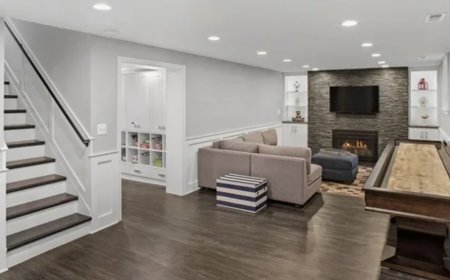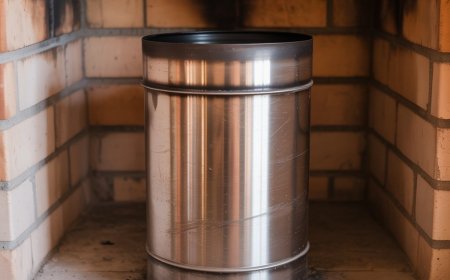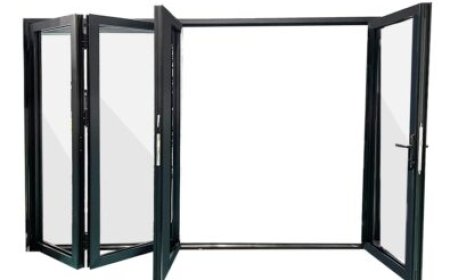Bringing Kitchens to Life: The Power of Millwork Shop Drawings
Millwork shop drawings bridge the gap between the architect’s vision, the designer’s creativity, and the fabricator’s execution.

The kitchen is often referred to as the heart of the home a space where functionality meets comfort, and design meets purpose. Behind every well-crafted cabinet, sleek countertop, and perfectly fitted pantry lies a crucial yet often overlooked component:millwork shop drawings. These detailed, technical illustrations serve as the blueprint for transforming kitchen concepts into real, workable designs.
Millwork shop drawings bridge the gap between the architects vision, the designers creativity, and the fabricators execution. They provide precise measurements, materials, finishes, and construction methods needed to bring every piece of millwork to life, from custom cabinetry to intricate moldings. Whether it's a high-end residential kitchen or a large-scale commercial culinary space, these drawings ensure accuracy, consistency, and coordination throughout the project.
In this blog, well explore how millwork shop drawings play a vital role in kitchen design, streamline the fabrication process, and ultimately lead to kitchens that are not only beautiful but also built to last.
What Are Millwork Shop Drawings?
Millwork shop drawings are detailed technical drawings used in the construction and design of custom woodwork pieces. These drawings show how different parts of a woodwork itemlike cabinets, doors, shelves, or furniturewill be built, joined, and installed. They are mainly used by manufacturers, carpenters, architects, and contractors to ensure everything is made and installed correctly.
Each shop drawing gives a clear view of the item from different anglesfront, side, top, and sometimes 3D. They include exact measurements, material details, hardware placement, and finishing instructions. For example, if youre building a kitchen cabinet, the drawing will show how tall it will be, how deep the shelves are, what wood is being used, and where the handles go.
These drawings act like a bridge between design and construction. Architects and designers may have an idea or sketch, but the millwork shop drawing turns that idea into a real, buildable plan. This helps avoid mistakes and saves time and money during production.
Millwork shop drawings are very important for custom projects where precision matters. A small error in size or joinery can cause big problems during installation. Thats why shop drawings go through a review and approval process before anything is built.
In simple words, millwork shop drawings are a blueprint for custom woodwork. They help everyone involvedfrom the designer to the installerunderstand what needs to be done and how to do it right.
Why Millwork Shop Drawings Are Essential for Kitchen Projects
Millwork shop drawings play a very important role in kitchen projects. When designing a kitchen, there are many custom elements like cabinets, drawers, shelves, and countertops. To build and install these correctly, everyone needs a clear and detailed plan. Thats exactly what millwork shop drawings provide.
These drawings show the exact size, shape, and position of each part. For example, they tell where the kitchen sink cabinet goes, how tall the wall cabinets are, or how wide the drawers need to be. They also show which materials will be used, what kind of hardware will be added, and how different pieces will be joined together.
Without these shop drawings, builders might guess or assume things, which can lead to mistakes. A small errorlike a cabinet being too widecan delay the project and increase costs. Shop drawings help avoid this by giving accurate instructions to everyone, from the carpenter to the installer.
They also help in getting approval from clients and architects before the work begins. This makes sure that the design matches the clients vision and that nothing is missed. If changes are needed, its much easier to fix them on paper than after the cabinets are built.
In simple terms, millwork shop drawings act like a map for kitchen construction. They bring clarity, save time, reduce mistakes, and make sure the kitchen turns out just the way it was planned. Thats why they are a must-have for any kitchen project.
Key Elements in Kitchen Millwork Shop Drawings
Kitchen millwork shop drawings are detailed plans that show how each part of the kitchen will be made and installed. These drawings are very important for making sure everything fits well and looks perfect. To do that, they must include some key elements.
1. Accurate Dimensions:
Every cabinet, drawer, and panel must have the correct height, width, and depth. These exact measurements help the carpenter cut and build pieces that fit properly in the kitchen space.
2. Scaled Views:
The drawings show views from the front, side, top, and sometimes in 3D. This gives a full understanding of how each piece will look and where it goes.
3. Material Details:
The type of wood or other materials used should be listed. This includes things like plywood, MDF, or hardwood. The finishsuch as paint, laminate, or polishshould also be mentioned.
4. Joinery and Hardware:
Details about how the pieces will be joined together (like screws, glue, or dowels) are important. The drawings also show where hinges, handles, and drawer slides will be placed.
5. Placement and Layout:
The drawings show exactly where each item will be installed in the kitchen. This helps with space planning and avoids mistakes during installation.
6. Notes and Labels:
Extra notes and labels make it easy to understand the drawing. These include part numbers, codes, or special instructions.
These key elements ensure the kitchen is built correctly, functions well, and looks beautiful.
Role of Drafting Professionals in Kitchen Millwork Projects
Drafting professionals play a very important role in kitchen millwork projects. They create detailed technical drawings that guide the entire process, from design to installation. These drawings help turn a design idea into something that can actually be built.
When a homeowner or designer shares a kitchen plan, drafting professionals take that idea and prepare accurate millwork shop drawings. These drawings include all the necessary detailsmeasurements, materials, hardware locations, and how each piece fits together. They make sure that cabinets, drawers, and other woodwork items are designed correctly and can be made without errors.
Drafting professionals also understand the technical standards required in kitchen design, such as proper spacing, appliance fitting, and safety codes. They ensure that the kitchen layout is both functional and beautiful. Their drawings help carpenters and fabricators cut materials correctly and avoid mistakes during construction.
They often work closely with architects, interior designers, and contractors. If there are any changes in the project, the drafting expert updates the drawings so that everyone is working with the latest version.
Their work also helps in getting approvals from clients or building inspectors. A well-made drawing shows that the project is planned professionally.
In simple words, drafting professionals act as the link between design and construction. Without their detailed and accurate drawings, it would be hard to build a kitchen that looks great, works well, and fits perfectly. They help save time, reduce waste, and make the whole project run smoothly.
The End Note
Millwork shop drawings are the foundation of any successful kitchen project. From the initial design concept to the final installation, these detailed drawings ensure every elementcabinet, shelf, or panelis crafted and placed with precision. They help avoid costly mistakes, improve coordination between teams, and make sure the finished kitchen is both functional and visually appealing.
Whether its a simple home renovation or a large-scale commercial kitchen, millwork shop drawings bring structure and clarity to the process. With the help of skilled drafting professionals, these drawings turn creative ideas into practical, buildable solutions. They act as a clear guide for fabricators, installers, and designers, keeping everyone aligned throughout the project.
In short, millwork shop drawings are more than just technical plansthey are the key to bringing kitchen designs to life with accuracy, efficiency, and style.










































